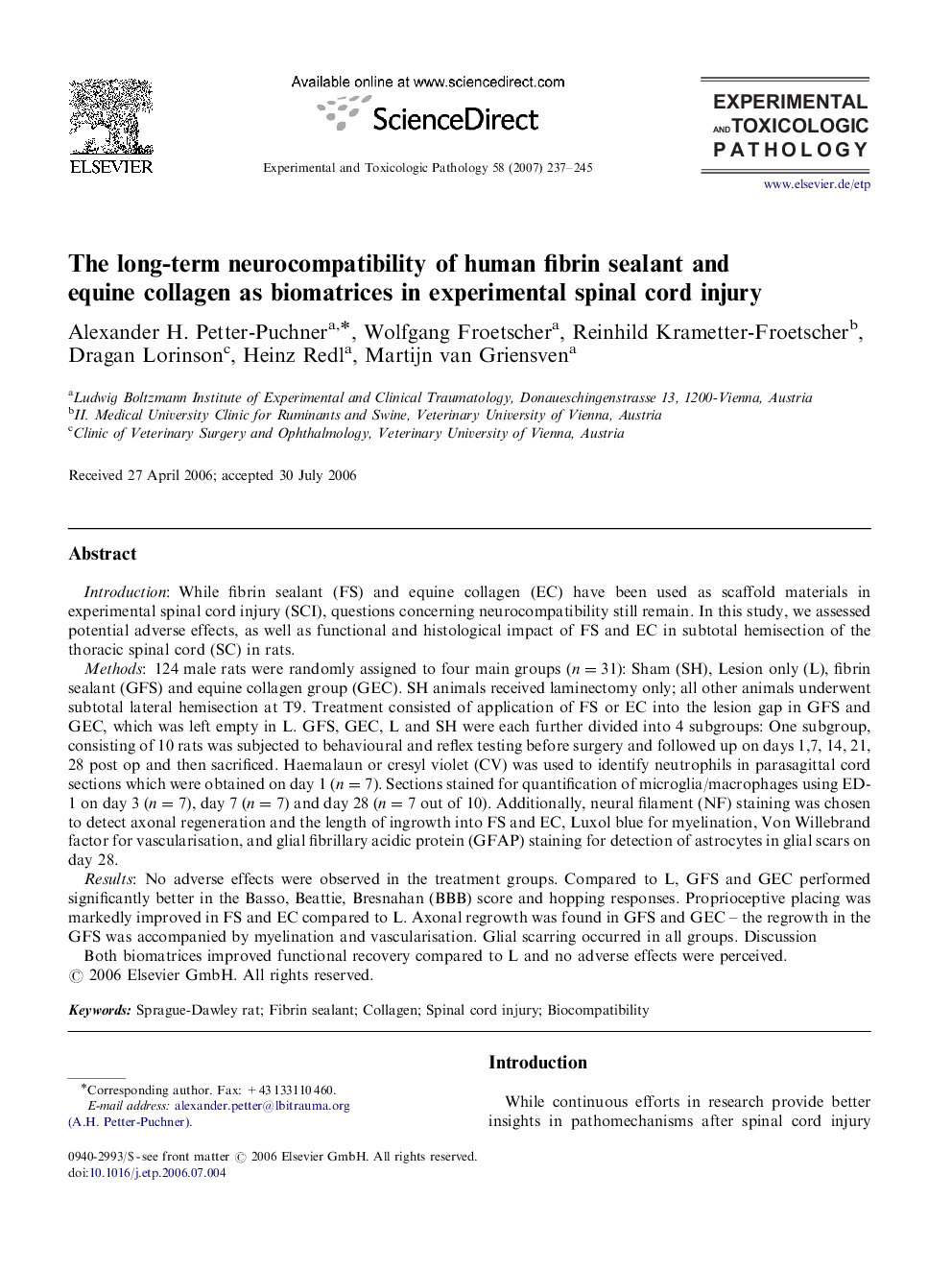| کد مقاله | کد نشریه | سال انتشار | مقاله انگلیسی | نسخه تمام متن |
|---|---|---|---|---|
| 2499252 | 1116500 | 2007 | 9 صفحه PDF | دانلود رایگان |

IntroductionWhile fibrin sealant (FS) and equine collagen (EC) have been used as scaffold materials in experimental spinal cord injury (SCI), questions concerning neurocompatibility still remain. In this study, we assessed potential adverse effects, as well as functional and histological impact of FS and EC in subtotal hemisection of the thoracic spinal cord (SC) in rats.Methods124 male rats were randomly assigned to four main groups (n=31n=31): Sham (SH), Lesion only (L), fibrin sealant (GFS) and equine collagen group (GEC). SH animals received laminectomy only; all other animals underwent subtotal lateral hemisection at T9. Treatment consisted of application of FS or EC into the lesion gap in GFS and GEC, which was left empty in L. GFS, GEC, L and SH were each further divided into 4 subgroups: One subgroup, consisting of 10 rats was subjected to behavioural and reflex testing before surgery and followed up on days 1,7, 14, 21, 28 post op and then sacrificed. Haemalaun or cresyl violet (CV) was used to identify neutrophils in parasagittal cord sections which were obtained on day 1 (n=7n=7). Sections stained for quantification of microglia/macrophages using ED-1 on day 3 (n=7n=7), day 7 (n=7n=7) and day 28 (n=7n=7 out of 10). Additionally, neural filament (NF) staining was chosen to detect axonal regeneration and the length of ingrowth into FS and EC, Luxol blue for myelination, Von Willebrand factor for vascularisation, and glial fibrillary acidic protein (GFAP) staining for detection of astrocytes in glial scars on day 28.ResultsNo adverse effects were observed in the treatment groups. Compared to L, GFS and GEC performed significantly better in the Basso, Beattie, Bresnahan (BBB) score and hopping responses. Proprioceptive placing was markedly improved in FS and EC compared to L. Axonal regrowth was found in GFS and GEC – the regrowth in the GFS was accompanied by myelination and vascularisation. Glial scarring occurred in all groups. DiscussionBoth biomatrices improved functional recovery compared to L and no adverse effects were perceived.
Journal: Experimental and Toxicologic Pathology - Volume 58, Issue 4, 8 January 2007, Pages 237–245